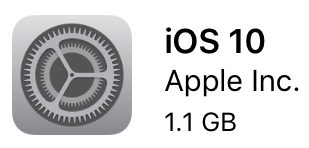To upgrade or not to upgrade?
We live in a world of constant change, so it seems. We are no longer satisfied with owning something or receiving a service – we are all told that we need to have the latest and best versions. We need to upgrade. There is much evidence that many people succumb to these demands – look at the lines outside of Apple stores when a new iPhone or iPad is released. I feel that there are lots of reasons to resist or, at least, carefully consider, these apparently inevitable upgrades …
I do my best to approach upgrades rationally and look at each as a balance of 3 things:
- tangible benefits
- cost
- risk
I drive a 9-year old car. Why have I not upgraded it? Go though my list:
- For as long as my current car is fully functional and reliable, what benefit would I gain from a new one?
- It would cost me quite a lot of money.
- There is a risk that a new car would fall short of my current car in some way – functionality, convenience and comfort come to mind.
At some point, #1 will result in a tipping point and I will need to spend some cash and suffer the pain of change.
My iPhone, iPad and computers are offering OS upgrades. I consider my list:
- There are some benefits, but nothing is shouting at me.
- There is no direct cost.
- Although unlikely, there may be teething troubles or app incompatibilities. I am holding out for iOS 10.1 and macOS 10.12.1 – might as well let others shake out the problems.
 My iPad and iPhone could be upgraded. The iPad is an Air 2 and I see minimal benefit from going for a Pro model and the cost would be substantial. On the other hand, my phone is a 16GB iPhone 6; I will most likely go for an iPhone 7 or 7 PLUS quite soon, as the benefits are clear and the cost can be quite low.
My iPad and iPhone could be upgraded. The iPad is an Air 2 and I see minimal benefit from going for a Pro model and the cost would be substantial. On the other hand, my phone is a 16GB iPhone 6; I will most likely go for an iPhone 7 or 7 PLUS quite soon, as the benefits are clear and the cost can be quite low.
Sometimes upgrades and updates seem to be non-optional. Windows is notorious for inconvenient updates. Not so long ago, I was doing a presentation using someone else’s laptop, when, 10 minutes in, the computer decided to apply some updates and we were unable to stop it. Apps on iOS are always being updated. As far as I can tell, there is no way to tell the App Store app that you simply do not want the update and it is impossible to return to a previous version after upgrading an app. [Please tell me if I am mistaken!] My mother-in-law uses a handful of apps on her iPad and is really upset when one of them changes beyond recognition for no apparent purpose.
There are many examples of upgrades to high tech equipment that provide much greater functionality, but at the cost of usability. TVs are a good example. A few years ago, using a TV was simple: switch it on, select a channel, watch. Nowadays, many people have a “system” of some kind, instead of a simple TV. Programs can be watched via terrestrial transmissions, from a satellite, over cable or streamed from the Internet. Additionally, material may be recorded locally on an HDR, played from optical media, fed from an online catch-up service or streamed from a paid service. With all these options, it is no surprise that a training class is needed to just see an episode of Friends …
Maybe the worst case scenario, with this rush for change, is the “incomplete upgrade” [a term I stole from Gretchen Rubin] – a situation when an upgrade is started, but not fully completed. Maybe you get [upgrade to] a shiny new computer, but it has not yet got some vital apps installed, so it is less useful than its predecessor. House remodeling projects are commonly prone to this phenomenon. The job is started, but not quite finished, leaving a family with inconveniences that may persist for months or years. Many bigger upgrade projects have 3 parts:
- starting – 10%
- doing – 80%
- finishing – 10%
It is #1 and #3 that really seem to challenge many people. Maybe that is just human nature. I guess all I can say is no not do #1 unless you are quite sure that you can deliver on #3.
